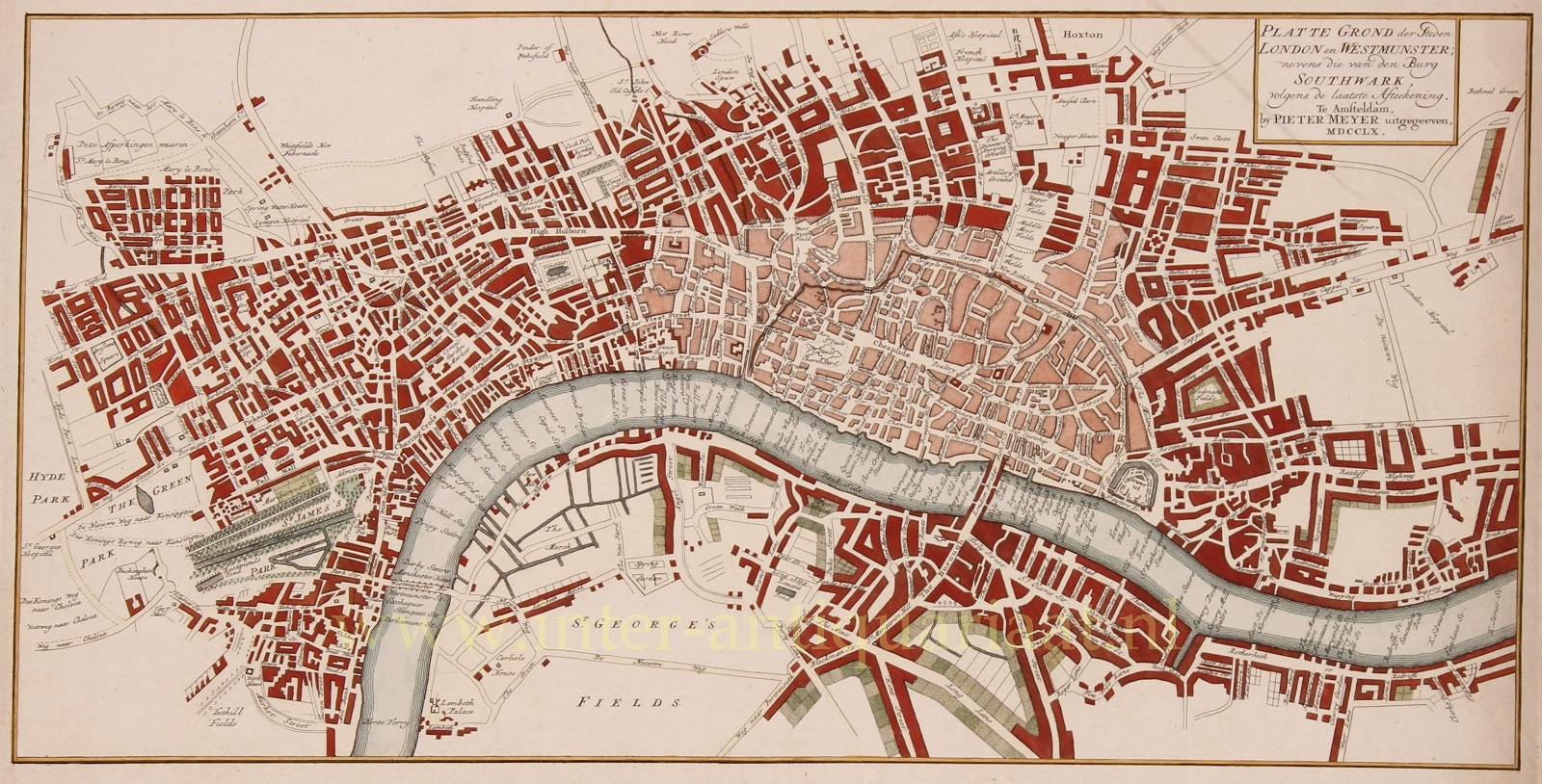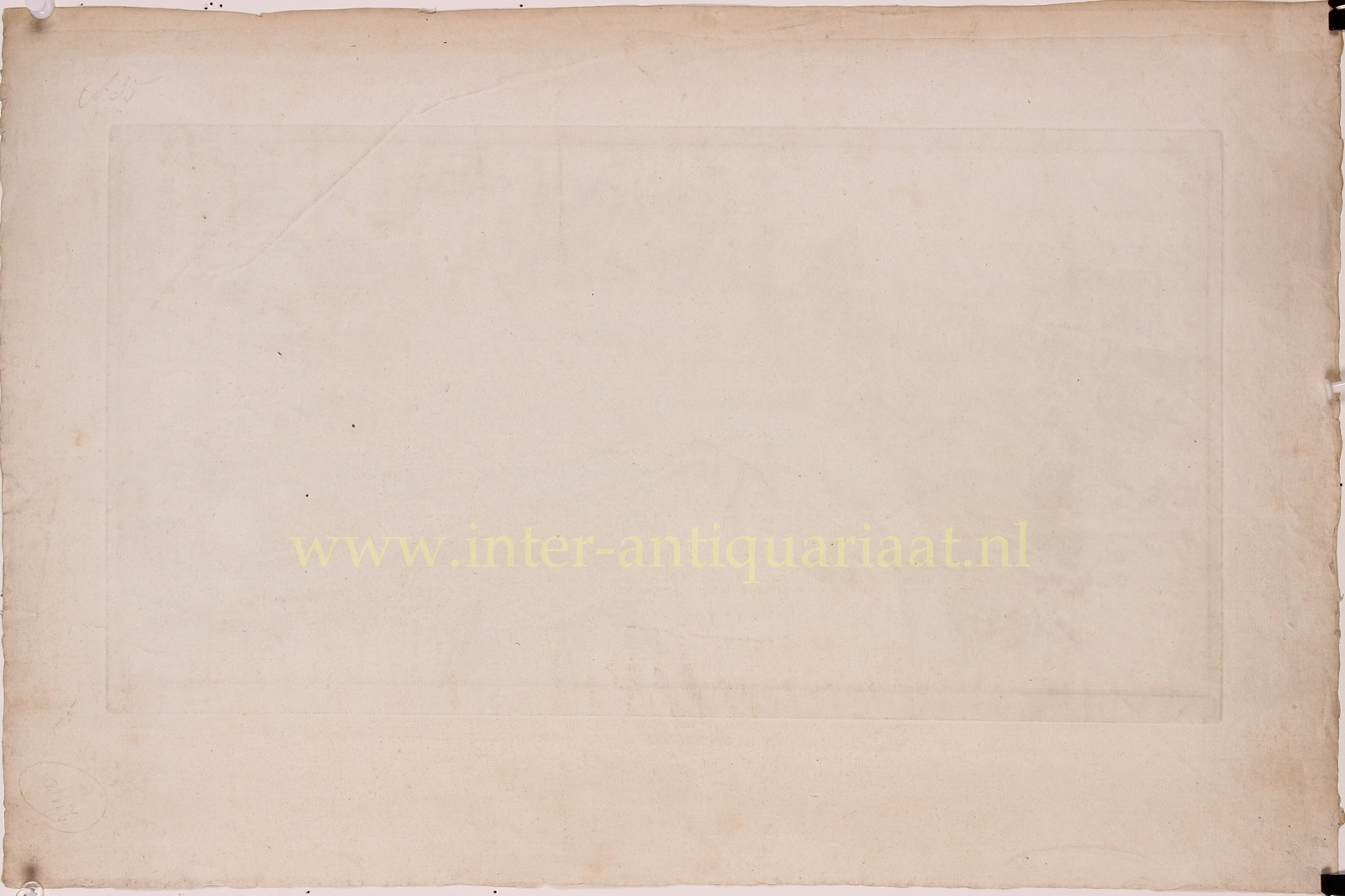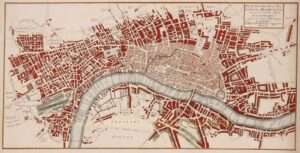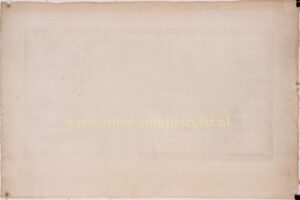“Platte Grond der Steden London en Westmunster; nevens die van den Burg Southwark, volgens de laatste Afteekening“ [plan of the cities of London and Westminter, as well as the borough of Southwark, according to the latest dissign], copper engraving made by Pieter Meyer of Amsterdam in 1760. Coloured by a later hand. Size: 21 x 41 cm.
The 18th century was a period of rapid growth for London, reflecting an increasing national population, the early stirrings of the Industrial Revolution, and London’s role at the centre of the evolving British Empire.
In 1707, an Act of Union was passed merging the Scottish and the English Parliaments, thus establishing the Kingdom of Great Britain. A year later in 1708 , St Paul’s Cathedral was completed.
Many tradesmen from different countries came to London to trade goods and merchandise. Also, more immigrants moved to London making the population greater. More people also moved to London for work and for business making London an altogether bigger and busier city. Britain’s victory in the Seven Years’ War increased the country’s international standing and opened large new markets to British trade, further boosting London’s prosperity.
During the Georgian period London spread beyond its traditional limits at an accelerating pace. New districts such as Mayfair were built for the rich in the West End.Up until 1750, London Bridge was the only crossing over the Thames, but in that year Westminster Bridge was opened and encouraged an acceleration of development in South London and in the East End, the Port of London expanded downstream from the City.
A phenomenon of the era was the coffeehouse, which became a popular place to debate ideas. Growing literacy and the development of the printing press meant that news became widely available. Fleet Street became the centre of the embryonic national press during the century.
18th-century London was dogged by crime. The Bow Street Runners were established in 1750 as a professional police force. Penalties for crime were harsh, with the death penalty being applied for fairly minor crimes. Public hangings were common in London, and were popular public events.
Literature: Darlington & Howgego (1964), “Printed Maps of London circa 1553-1850”, no. 113.
Price: Euro 325,-





